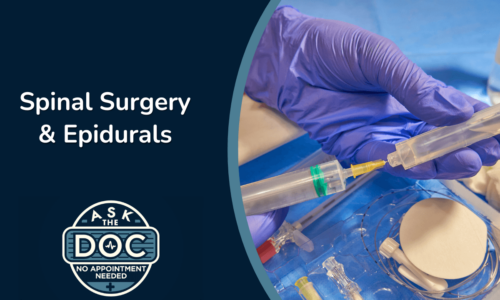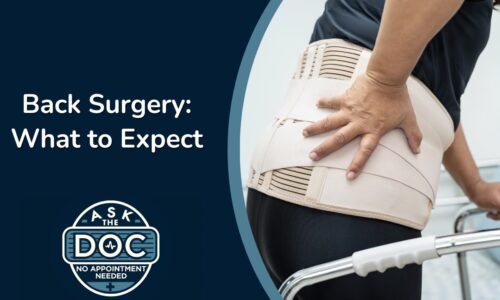Arthritis and Back Pain |
Amir Mahajer, Interventional Spine Specialist at Baptist Health Neuroscience Center, explains how arthritis is related to back pain. “In the elderly there are arthritic changes in the back. So, at about age 30 we start to see changes, like little bit disc issue’s ligamentum flavum, which are the ligaments of the spine”.
According to Mahajer, it is important to identify what is normal aging of the spine and what is a pathology or a problem in the spine depending on the patient’s symptoms.
Transcript
One of the most common reasons for this pain is arthritis? Right in the elderly its are the arthritic changes in that back so at about age 30 we start to see some arthritic changes which the the beginning of it is sort the soft tissue problems a little bit disc issue ‘s ligamentum flavum which is the ligaments of the spine and then we start getting arthritis or the overgrowth of bone so anytime you have a large bone that’s going to be an arthritic change cystic changes and in the elderly that’s common so in 30 it starts by six date you’re guaranteed that have some arthritic changes in the spine so it’s very common and we have to identify what is normal aging of the spine and what is pathologic or a problem or disorder in the spine and see how that correlates to the patient’s symptoms because just because you were finding on imaging it doesn’t necessarily dictate treatment we really treat the patient and not the pictures and arthritis in the back can manifest in several different ways you can have arthritis that just causes back pain and that’s usually the joints in the back sometimes those are called facet joints or zygoapophysial joints in the back and that can usually be in the back once those will grow too much or the disk space becomes narrowing of degenerative discs or narrowing of the discs that can now get the nerve hole to be very small and can pinch the nerve as it exits or as all the nerves come down so those are all different things some symptoms as from central canal stenosis would be claudication neurogenic claudication would right so that’s gonna be when you when you’re walking and you feel like your legs get heavy or fatigued and you have to sit down and take a break that’s a it’s a significant problem and something that we can address with some exercises and sometimes we need in further intervention such as injections or surgery for that.








